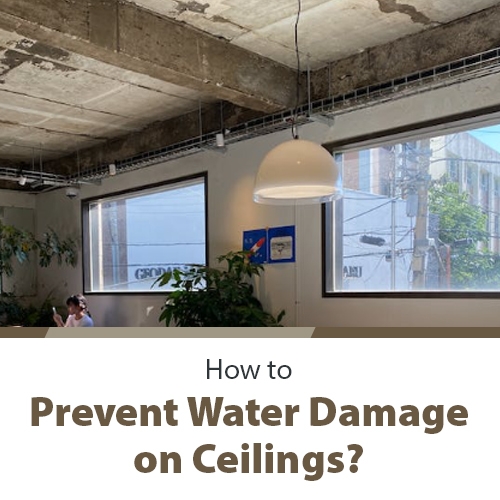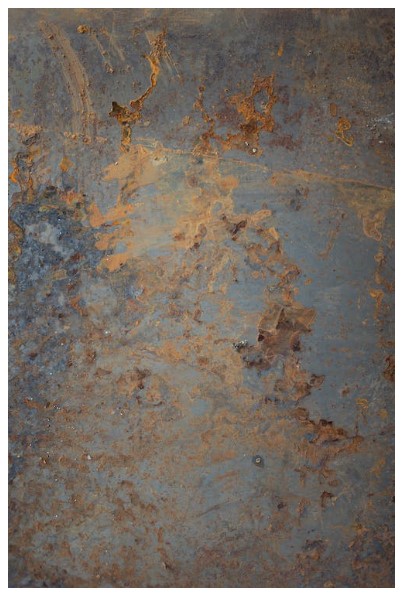Water damage on Livermore area ceilings might seem like a minor issue, but it’s a silent troublemaker that can wreak havoc in the long run. Whether it’s a slow drip from a leaky roof or a sudden burst from a pipe, water damage can lead to a host of problems, from unsightly stains and peeling paint to structural issues like weakened ceilings. Ignoring it can turn a small inconvenience into a costly nightmare.
Fortunately, you can take steps to prevent water damage on your ceilings. In this guide, we’ll explore practical tips on preventing water damage on ceilings.
Signs of Water Damage on Ceilings
Recognizing these signs of water damage on ceilings is vital for preventing extensive and costly repairs. Early detection and timely action can save you from a headache and significant expenses in the long run. If you notice any of these signs, it’s best to consult with professional painters in the Tracy area to assess and address the issue before it escalates.
1. Watermarks or Brown Rusty Stains
When you spot watermarks or brown rust stains on your ceiling, it’s like an SOS signal from your home. These conspicuous marks materialize when water infiltrates the ceiling material, causing unsightly discoloration.
The appearance of these stains can vary in size and shape, but their message remains consistent: water damage is afoot. Ignoring these warning signs can pave the way for more ominous problems, such as the insidious growth of mold and the gradual erosion of your ceiling’s structural integrity.
The cost of repairing such advanced issues far surpasses the investment in early detection and mitigation.
2. Warped or Discolored Wood
If your ceiling features wooden components, like beams or panels, these can absorb moisture when exposed to water damage. Over time, this can lead to warping or discoloration. For example, wooden ceiling beams may begin to curve or bend due to the moisture they’ve absorbed. Discolored wood may appear darker, or you may notice water stains on the wood. If left unaddressed, water-soaked wood can rot, compromising the structural integrity of your ceiling.
3. Dripping or Water Stains on Light Fixtures
Water stains on light fixtures, ceiling fans, or other ceiling-mounted objects indicate water infiltration from above. Imagine you notice a water stain developing on your ceiling fan, which is often due to a roof leak. If not fixed, this can lead to ceiling damage and potential electrical hazards if water comes into contact with the wiring.
2. Mold Along Corners, Ceilings, and Walls
Mold isn’t just an eyesore; it’s a telltale sign of excess moisture and underlying water damage. When left unattended, it can unleash its growth at an alarming rate, compromising the aesthetics of your home and becoming a health hazard.
Mold can be sneaky, taking root in concealed areas, so addressing water damage promptly is paramount. If, for instance, you spot mold infiltrating the corners of your ceiling, it’s a glaring indicator of water intrusion from above, possibly originating from a roof leak or plumbing mishap.
Swift intervention can prevent further mold proliferation and the potential health issues associated with it.
3. Unpleasant Changes in Indoor Air Quality
Water damage often promotes mold and mildew growth, which can significantly impact indoor air quality. Mold spores released into the air can lead to respiratory issues and allergies. For example, if your family members suddenly experience increased coughing, sneezing, or eye irritation, it may be related to mold growth resulting from water damage on the ceilings.
Addressing the water issue and eliminating the mold is essential to maintaining a healthy indoor environment.
4. Swollen Ceilings
A swollen or sagging ceiling is a red flag for serious water damage. This occurs when water accumulates within the ceiling material, causing it to expand. If left unchecked, the ceiling may eventually collapse. Repairing swollen ceilings can be complex, involving removing and replacing damaged materials.
5. Water Droplets or Puddles on the Floor
In severe cases of water damage, moisture may progress beyond the ceiling and lead to water droplets or puddles on the floor directly underneath the affected area.
For instance, if you see water droplets forming on your floor in a room with a water-damaged ceiling, it’s a clear sign that the damage has escalated and may be causing ceiling repairs and damage to your flooring, which can be expensive to rectify.
6. Wallpaper, Baseboards, Trim Separating from Walls
If you notice your wallpaper, baseboards, or trim parting ways with your walls, it’s akin to a silent alarm for hidden water damage. Behind the scenes, excess moisture weakens the adhesive that holds these elements in place, compelling them to peel away.
Ignoring this subtle cry for attention can lead to the progressive deterioration of your interior finishes. Instead of dismissing these warning signs, it’s crucial to investigate and address the source of moisture to safeguard both the aesthetic appeal and structural integrity of your living space.
7. Peeling Paint
Water infiltration can cause paint to bubble or peel off the ceiling. If you don’t fix this issue, it can lead to more extensive damage, such as the deterioration of the underlying drywall or plaster.
8. Cracks or Bubbles
Cracks and bubbles in the ceiling are signs of water damage. The moisture weakens the ceiling’s structural integrity, resulting in these imperfections. If ignored, these issues can worsen over time, potentially leading to a more significant repair project.
9. Soft Spots or Bulges
When you touch your ceiling, it should feel firm and even. Soft spots or bulges suggest that the ceiling material has absorbed water, causing it to weaken or balloon.
For example, a soft spot could develop when a ceiling drywall panel becomes saturated with water, and it might feel mushy or unstable to the touch. Bulges indicate areas where the ceiling material has expanded due to water absorption. These areas are vulnerable and may collapse if not addressed, potentially damaging property or causing injury.
10. Decreased Insulation Efficiency
Water damage can compromise the insulation in your ceiling. For instance, if your ceiling insulation becomes wet due to a leak or condensation, it loses its effectiveness. This can lead to a noticeable decrease in your home’s energy efficiency, causing higher heating and cooling bills and making it harder to maintain a comfortable indoor temperature.
Steps to Take for Safety
Safety is paramount when handling water damage. Following these steps will help mitigate immediate risks and set the stage for effective restoration.
1. Turn Off Electricity and Water Supply
If you notice any signs of water damage, the first step is to turn off electricity to the affected area. Water and electricity don’t mix; a wet ceiling can pose electrical hazards. If necessary, locate your circuit breaker and shut off power to the affected room or the entire house.
Additionally, if the water damage is from a plumbing issue, turn off the water supply to prevent further leakage. This initial action will reduce the risk of escalation of electrical accidents and water damage.
2. Wear Appropriate Protective Gear
Before you start inspecting or addressing water damage, it’s crucial to wear appropriate protective gear, as your health and safety should always come first. Safety gear includes items like rubber gloves, rubber boots, and a mask if there is visible mold growth or a musty odor. These items will protect you from potential contaminants and irritants that may be present in water-damaged areas.
3. Ventilate the Area to Prevent Mold Growth
Proper ventilation is essential to prevent the growth of mold, which can thrive in damp conditions. Open windows and doors to allow fresh air to circulate through the affected area. If you can access fans or dehumidifiers, use them to expedite drying.
Adequate ventilation will help reduce humidity levels and prevent mold from taking hold, safeguarding indoor air quality and health.
4. Hire a Professional
While there are initial steps you can take for safety, it’s highly recommended to consult a professional, such as Custom Painting, when dealing with significant water damage on your ceiling. Custom Painting is one of the Mountain h best painting contractors you can trust to repair water-damaged ceilings.
Why do we recommend this? Because water damage can often extend beyond what’s visible, and professionals have the expertise and equipment to assess the full extent of the problem. They can also safely address electrical issues, structural damage, and mold remediation. Investing in professional assistance can save you time, ensure thorough repairs, and protect your home and well-being in the long run.
Ways to Prevent Water Damage
You can take certain actions to prevent water damage to the ceiling in the future. We recommend getting the job done by an expert interior painting service in Livermore, such as Custom Painting, Inc.
1. Clean Gutters and Downspouts
Regularly cleaning your gutters and downspouts is important in preventing water damage. Clogged gutters can lead to water overflowing and seeping into your home’s foundation and may lead to structural issues and basement flooding.
Ensure that your gutters are free from debris and that downspouts direct water away from your home to prevent soil erosion around the foundation.
2. Install Water Alarms
Water alarms are valuable devices that can warn early about potential water damage. These alarms are placed in areas prone to water leaks or flooding, such as basements and near water heaters.
They sound an alert when they detect moisture. You can take immediate action to prevent further damage.
3. Prevent Pipes from Freezing
Frozen pipes can burst, causing extensive water damage and repair costs. Insulate pipes in unheated areas, use heat tape, and allow faucets to drip during extremely cold weather to prevent freezing.
Regularly check for drafts in your home and seal them to maintain a warm environment that protects your plumbing.
4. Maintain Proper Grading and Drainage
The grading of your landscape should slope away from your home’s foundation, ensuring that rainwater flows away from the house. This prevents water from pooling around the foundation, which can lead to basement flooding and structural issues.
Additionally, consider installing a sump pump in your basement to manage groundwater and reduce flood risk.
5. Seal Exterior Gaps and Cracks
Examine the exterior of your home for gaps, cracks, and holes. Use caulking or weatherstripping to seal these openings in walls, windows, and doors. By maintaining a tight seal, you’ll prevent water from infiltrating your home during rainstorms or snowmelt.
6. Maintain Your Landscaping
Strategically plant trees and shrubs away from your home’s foundation. Invasive roots can damage underground pipes and create pathways for water to seep into your foundation. Additionally, regularly trim branches near the roof to prevent damage from falling limbs during storms.
7. Secure Basement Windows
Basement windows are often vulnerable to water infiltration. Install window covers to keep rainwater, debris, and pests out of window wells. Ensure that the windows themselves are sealed to prevent water from entering your basement.
Conclusion
When it comes to addressing water damage, it’s imperative to choose a professional service that possesses the expertise and the commitment to safeguard your home. Custom Painting, Inc. Livermore stands out as the ideal choice for this critical job. With a stellar reputation for their dedication to quality work, prompt service, and attention to detail, they are well-equipped to tackle water damage issues effectively. For a seamless and reliable solution to your water damage concerns, contact Custom Painting, Inc. at 925-294-8062 or by filling out our contact form.





